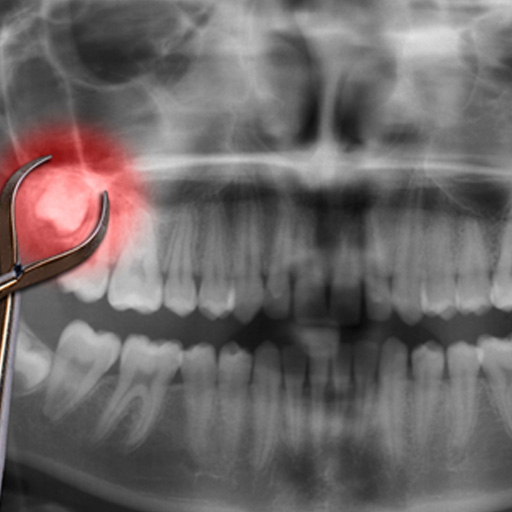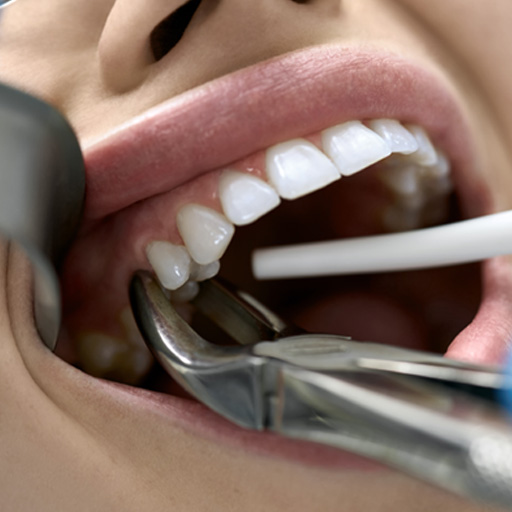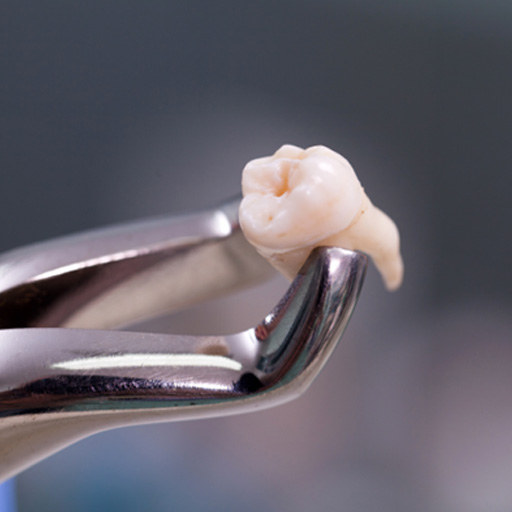Tooth Extractions – Fort Worth, TX
Comfortably Remove Problematic Teeth
Under normal circumstances, Dr. Neil provides services to protect and preserve your teeth and gums, like preventive care to avoid oral issues and restorative treatments to address any areas of concern, like cavities, gum disease, or injured enamel.
However, if you have a severely damaged, decayed, or destabilized tooth that puts your smile at risk, these options might not be sufficient to fix it. In such circumstances, our team can comfortably remove problematic teeth with an extraction procedure, often followed by an appropriate replacement. Continue reading to learn more about why this is sometimes necessary, and please don’t hesitate to contact us for additional information.

Why Choose Karen Neil Fort Worth Dentistry for Tooth Extractions?
- Caring Dentist with Decades of Experience
- Advanced Technology to Enhance Patient Experience
- Sedation Available for Improved Comfort
Reasons Why Tooth Extractions Are Necessary

Many patients in Fort Worth question whether an extraction is truly necessary and whether other solutions, like a tooth-colored filling or root canal procedure, might address the issue. But if Dr. Neil has recommended removal, it’s likely because she has already determined these services won’t be effective.
She might suggest this treatment if you have:
- Developed decay, disease, or damage so severe that it can’t be repaired.
- To make room in your mouth to successfully complete orthodontics.
- A few remaining teeth that are preventing you from being fitted with dentures.
- A wobbly, loose, or destabilized permanent tooth.
- Partially erupted, infected, or impacted wisdom teeth.
The Process of Removing a Tooth

It might vary slightly based on your unique circumstances, but usually our team begins the procedure by applying a local anesthetic to numb the affected area. This is often sufficient to alleviate aches, so you might feel pressure while we work, but not pain. However, we also offer nitrous oxide (laughing gas) that’s inhaled through a gas mask placed over your nose to help you feel comfortable.
Then, we’ll lift your tooth from the socket slightly using a small dental device called an elevator. This allows Dr. Neil to grasp the tooth firmly with forceps and wiggle it gently until it comes free of the connective tissues. If your tooth is impacted or partially erupted, which frequently happens when wisdom teeth arrive, we may have to create an opening in your gums to access it. Larger teeth may also need to be broken into smaller pieces to be removed without harming your jawbone.
Finally, we’ll discuss potential replacement options to avoid possible complications from tooth loss, like dental drifting or a thinning jawbone.
Tooth Extraction Aftercare

Once your procedure is complete, your mouth must form a blood clot over the recently exposed nerves and bone tissue to prevent a potentially painful side effect known as dry socket. Many post-op instructions are designed to preserve it so you can recover quickly and without issues.
Some typical directions might include:
- Get plenty of rest and avoid physical activities that elevate your heart rate or blood pressure, which can dislodge the clot.
- Drink fluids to stay hydrated and keep your mouth clean, but don’t use a straw because the force of suction can damage the clot.
- Don’t smoke vapes, cigarettes, or use other tobacco products that contain nicotine, which suppresses your immunity and significantly increases the risk of complications.
- Prop your head up to sleep so fluids don’t pool behind the extraction site, which increases throbbing.
- Take any prescribed antibiotics or pain medications exactly as directed.
- Address aches with ice packs or over-the-counter options like Tylenol or ibuprofen.
Understanding the Cost of Tooth Extractions

The cost of tooth extractions is something most people worry about when learning that they require this type of procedure. Fortunately, Dr. Neil and our talented team are here to ease your concerns and make sure you have all the information you need to take care of your oral health. The overall price will be determined during your initial consultation, as that is when we will consider the various factors that make up your estimate. While there is a good chance your dental insurance plan will help cover a portion of the cost, there may still be out-of-pocket expenses that you must pay. Do not worry, as we will discuss additional ways we can help you save.
Factors That Can Affect Tooth Extraction Cost

During your meeting with Dr. Neil, she will explain the severity of your damaged or infected tooth and why it must be removed. After going over the proposed plan, she will also explain the estimated cost for this type of treatment. Using the factors listed below, you will be able to better understand how we establish the final price:
- An evaluation of your oral health and whether you require any additional treatment, such as gum disease therapy, bone grafting, a sinus lift, etc.
- Determining what kind of tooth needs to be removed, as those in the back can be more complex.
- Determining if you need a simple or surgical removal based on whether the tooth has erupted or is impacted beneath the gumline.
Does Dental Insurance Cover Tooth Extractions?

Most dental insurance plans account for tooth extraction as part of their covered treatments. Removing an unhealthy tooth is essential if you are to maintain better oral and overall health, and leaving one in will only worsen your condition and cause costlier care in the future. When reviewing your plan, you will likely notice that insurance companies will agree to cover 50-80% of the cost, depending on whether they view it as a minor or major restorative treatment. Also, you must first meet your annual deductible and have enough remaining funds available as part of your yearly maximum before your insurer will agree to pay its portion.
How to Make Tooth Extractions Affordable

Since dental insurance will not cover the full amount of your tooth extraction, you will have an outstanding balance that you must pay. If it is still too much to be paid for at one time, you can apply for CareCredit flexible financing and break up your payments over time. You will choose from one of their low-or no-interest plans and achieve greater peace of mind knowing that your oral health is in better shape, and so is your wallet.
Tooth Extractions FAQs
Does Getting a Tooth Extracted Hurt?
This is a very common concern, especially among patients who struggle with dental anxiety. If this is a question that has been on your mind, we have good news for you: the first step of the procedure is always to numb your mouth. That way, you don’t feel any pain during your time in the treatment chair. Even after we’ve removed the tooth and tended to the extraction site, we will provide you with aftercare instructions so you can continue to stay comfortable throughout the healing process.
What Are My Options for Replacing a Missing Tooth?
We offer several tooth-replacement options at our office, but the one we recommend for you will depend on your unique dental history, needs, and goals. For example, if you are missing up to four teeth in a row, then a dental bridge may be the best solution. If you’re only missing one tooth, on the other hand, then a dental implant may be more ideal since it can replace both the root and crown of your tooth. Rest assured, we will review each one more in-depth at your consultation so you can confidently decide which one is best for you.
Can I Smoke After Getting a Tooth Extracted?
No, smoking is not recommended before or after having a tooth extracted. There are several reasons for this, including that tobacco products can delay healing and increase your risk of developing a dry socket. So, it’s of the utmost importance that you abstain from smoking for at least five days following the procedure.
Important reminder: If you’ve had difficulty quitting in the past, don’t hesitate to let our emergency dentist in Fort Worth know! Remember, we aren’t here to judge you. Rather, we want to know so we can help you prepare in advance.
What Can I Do to Speed Up the Healing Time?
If you’re used to having a jam-packed schedule, then you might not love the idea of dedicating 3+ days solely to resting. However, it’s very important that you do so because getting back into your usual routine too soon can delay the healing process. To put it simply, the best way to “speed up” the recovery period is by getting plenty of rest and following the other aftercare instructions we provide you with to a tee, like eating only extremely soft foods and rinsing with warm saltwater periodically.
How Long Do I Need to Wait to Eat After My Tooth Extraction?
It’s best to wait at least an hour to eat so the gauze can remain in place, helping slow down the bleeding in the process. This also allows the numbing agent to wear off so you have full sensation in your mouth while chewing. Remember, you need to stick to a liquid diet for at least the first 24 hours and to eat only extremely soft foods after that, like plain yogurt, applesauce, and pudding.
